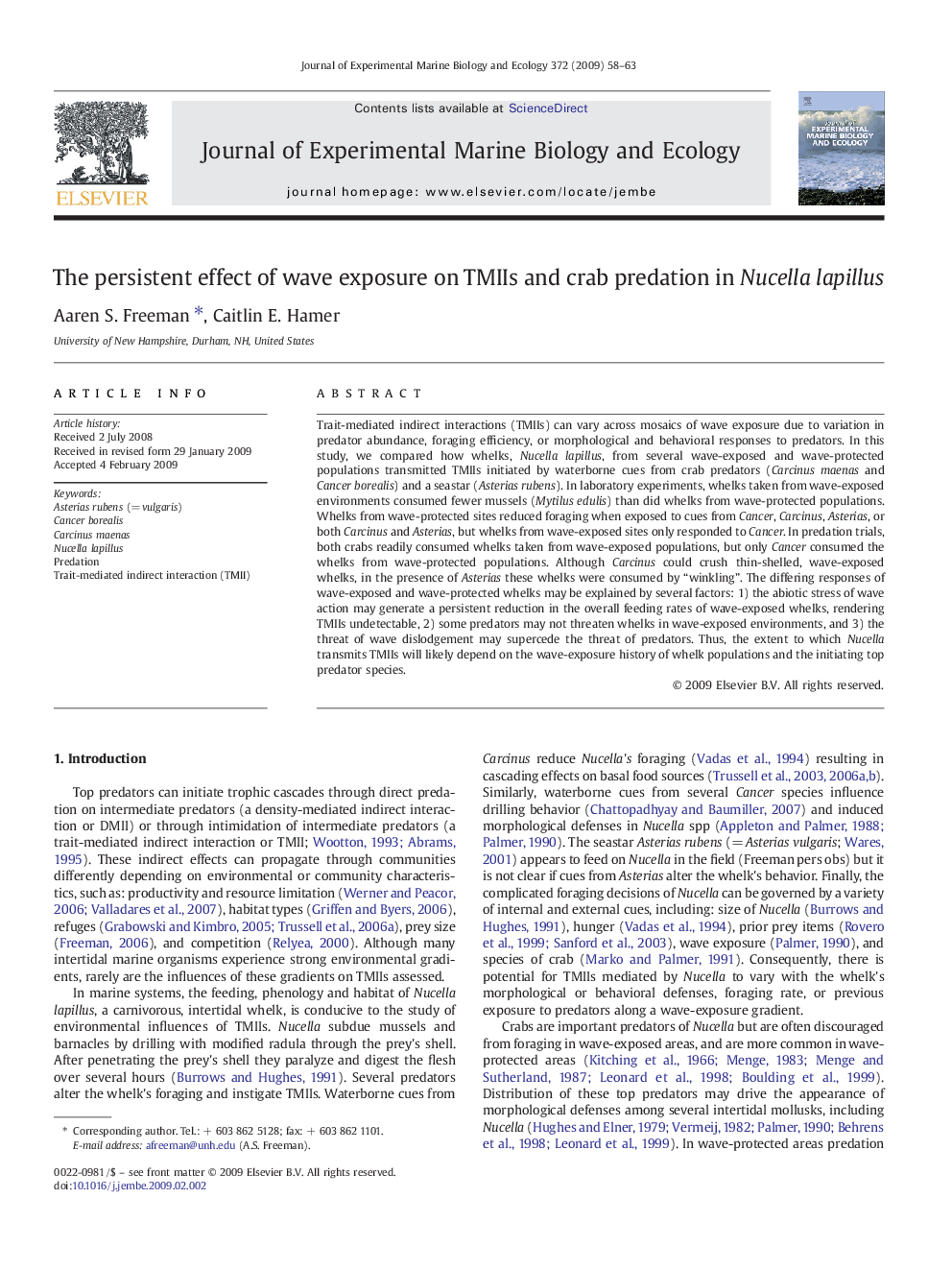| Article ID | Journal | Published Year | Pages | File Type |
|---|---|---|---|---|
| 4396996 | Journal of Experimental Marine Biology and Ecology | 2009 | 6 Pages |
Abstract
Trait-mediated indirect interactions (TMIIs) can vary across mosaics of wave exposure due to variation in predator abundance, foraging efficiency, or morphological and behavioral responses to predators. In this study, we compared how whelks, Nucella lapillus, from several wave-exposed and wave-protected populations transmitted TMIIs initiated by waterborne cues from crab predators (Carcinus maenas and Cancer borealis) and a seastar (Asterias rubens). In laboratory experiments, whelks taken from wave-exposed environments consumed fewer mussels (Mytilus edulis) than did whelks from wave-protected populations. Whelks from wave-protected sites reduced foraging when exposed to cues from Cancer, Carcinus, Asterias, or both Carcinus and Asterias, but whelks from wave-exposed sites only responded to Cancer. In predation trials, both crabs readily consumed whelks taken from wave-exposed populations, but only Cancer consumed the whelks from wave-protected populations. Although Carcinus could crush thin-shelled, wave-exposed whelks, in the presence of Asterias these whelks were consumed by “winkling”. The differing responses of wave-exposed and wave-protected whelks may be explained by several factors: 1) the abiotic stress of wave action may generate a persistent reduction in the overall feeding rates of wave-exposed whelks, rendering TMIIs undetectable, 2) some predators may not threaten whelks in wave-exposed environments, and 3) the threat of wave dislodgement may supercede the threat of predators. Thus, the extent to which Nucella transmits TMIIs will likely depend on the wave-exposure history of whelk populations and the initiating top predator species.
Related Topics
Life Sciences
Agricultural and Biological Sciences
Aquatic Science
Authors
Aaren S. Freeman, Caitlin E. Hamer,
